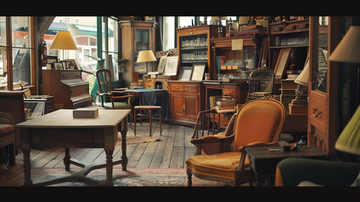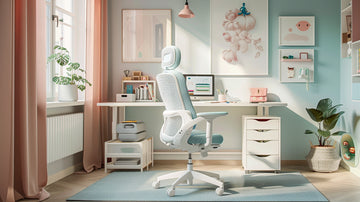Introduction
Vintage furniture has seen a major resurgence in popularity in recent years. More and more people are seeking out unique antique and vintage pieces to furnish their homes. Vintage furniture refers to pieces that are at least 20-30 years old, although some definitions stretch this to 50+ years old. These items have a classic, timeless aesthetic that appeals to many. In this article, we will explore the history of vintage furniture over time, from its origins to its revival today.
Origins of Vintage Furniture
The origins of vintage furniture can be traced back thousands of years to ancient civilizations like Egypt, Greece, and Rome. Furniture design in ancient Egypt featured intricate gold leaf carvings and animal motifs, with stools, beds, and chests being common furniture pieces. Ancient Greek furniture was known for lightweight curved legs and elegant, minimalist designs like the famous klismos chair. In ancient Rome, furniture focused on opulent styles using materials like marble, gold, silver, and ivory. Luxurious dining couches for reclining were popular.
During the Middle Ages, furniture design centered around basic chests, benches, stools, and beds made from oak. Intricate hand carvings became more common. The Renaissance period from the 15th to 17th centuries marked a shift toward more refined furniture with ornate detailing and new techniques like marquetry inlay. Influences like Gothic and Baroque styles emerged. Upholstered chairs and sofas also became popular during this time.
Main vintage furniture styles stemming from these early civilizations and periods include Egyptian revival, Gothic revival, Renaissance revival, Rococo, and Neoclassicism. Design influences were far-reaching, shaping furniture aesthetics for centuries.
1600s Furniture
The 1600s saw major developments in furniture design and craftsmanship, heavily influenced by the opulent tastes of European monarchies. The Baroque and Rococo styles dominated furniture of this era, favoring dramatic shapes, exotic woods, gilding, and intricate carvings.
The Baroque style emerged in the early 1600s, characterized by extravagant curves and grandeur. Furniture makers used mahogany, walnut, and ebony in contrasting veneers to create striking visual effects. Cabinets featured broken pediments, volutes, caryatids, and architectural motifs. The French monarch Louis XIV embraced the Baroque style, making it fashionable throughout Europe. His lavish Palace of Versailles inspired ornate furniture with a sense of drama and movement.
By the mid-1700s, the Rococo style evolved from the Baroque. Rococo furniture had more fluid, naturalistic curves and asymmetric shapes. Exotic woods like mahogany and elaborate ornamentation created a lighthearted, intimate effect. The French court at Versailles favored Rococo, which spread across France and Central Europe. Rococo furniture was often lacquered and gilded, adorned with flowers, shells, and scrolls. The asymmetry and curvaceous cabriole legs gave Rococo furniture a sense of motion and playfulness.
Overall, 17th century furniture reflected the opulence and extravagance of monarchies like Louis XIV. Skilled cabinetmakers working for the aristocracy used rare woods and lavish decoration to create dramatic statement pieces. The Baroque and Rococo styles made furniture an artform that conveyed prestige and status for the royal courts of Europe.
1700s Furniture
The 1700s was a significant time period for furniture design and craftsmanship. Two major styles emerged during this era - Georgian and Neoclassical. Furniture makers like Thomas Chippendale became quite popular and influential.
Georgian furniture was characterized by symmetry and classical proportions. Mahogany was widely used during this time period. Design motifs included architectural elements like columns and pediments. Inlays and carvings were also common decorative techniques.
As the Neoclassical style emerged, furniture became more ornate and lavish. Elaborate decorative swags, ribbons, wreaths and other garlands became trendy. Upholstered seats and backs on chairs and sofas also became more common. The archetypal cabinet maker Thomas Chippendale was known for his intricate mahogany furniture with elaborate carved details and fine joinery.
The 1700s marked a shift towards more comfort and ornamentation in furniture design. Skilled craftsmen like Chippendale pushed the boundaries of what was possible. Many modern furniture styles can trace their roots back to the significant developments of the 1700s.
1800s Furniture
The 1800s was a time of great change and innovation in furniture design. With the Industrial Revolution and new machinery, furniture production shifted from small workshops to large factories. Mass production enabled more affordable and widely available furniture. At the same time, iconic designers emerged who influenced stylistic trends.
The Empire style was popular in the early 1800s, influenced by ancient Greek and Roman motifs. Mahogany and exotic woods were used, with high-quality veneers. Ornate carvings, claw feet, and bronze embellishments added grandeur. The Biedermeier style originating in German-speaking areas was more modest and bourgeois, with restrained decorations and utilitarian designs.
However, the mid to late 1800s was dominated by Victorian style furniture. As cited from https://blog.newel.com/a-brief-history-of-victorian-furniture/, it incorporated influences from earlier eras like Rococo and Gothic, using rich fabrics, detailed carvings and dark, ornate woods. Mass production enabled more elaborate and affordable Victorian furniture to reach the growing middle classes.
Prominent designers like Charles Eastlake promoted principles of honesty, simplicity and craftsmanship. This helped counter the excessive ornamentation of mainstream Victorian style. Overall, the 1800s marked a period of remarkable progress and variety in furniture design and manufacturing.
Early 1900s Furniture
The early 1900s saw the emergence of several new furniture styles that broke from tradition and embraced new forms, materials and ideas. Three major styles that came to prominence were Art Nouveau, Arts & Crafts, and Art Deco.
Art Nouveau furniture was characterized by flowing, organic lines and forms inspired by plants and nature. The style emerged in Europe in the late 19th century as a reaction against mass production. Art Nouveau pieces featured curved shapes, asymmetrical designs, and often incorporated glass, metal, and ceramics. According to Styylish, Art Nouveau was the first major 20th century furniture style.
The Arts & Crafts movement also developed in response to industrialization, with an emphasis on simple furniture made by hand. Arts & Crafts style furniture featured rectilinear forms, exposed joinery, and often incorporated regional craft elements. Simplicity and natural materials were hallmarks of the style.
Art Deco arose in the 1920s and embraced geometric shapes, streamlining, and luxurious materials like chrome, plastic, and exotic woods. As noted by Archiscene, Art Deco furniture represented modernity and the machine age. The use of new industrial materials like chrome, steel, and plastics set Art Deco furniture apart from earlier styles.
Overall, early 20th century furniture trended away from ornamentation toward geometric forms, simplicity, and the use of new materials made possible by technological advances. These new styles made a dramatic break from 19th century Victorian era furniture.
Mid-Century Modern Furniture
Mid-century modern furniture emerged in the years following World War II and was characterized by clean, minimalist lines and affordable mass production. Famed designers like Charles and Ray Eames, Hans Wegner, and George Nelson embraced new materials and manufacturing techniques to create sleek, modular furniture. The Mid-century modern aesthetic rejected the ornate styles of the past in favor of a simplified, functional look.
The Mid-century modern movement had its roots in the Bauhaus school and the work of pioneering modernist architects like Le Corbusier. These influences inspired the use of modern materials like molded plywood, fiberglass, aluminum, and plastic. Iconic Mid-century modern furniture pieces like the Eames lounge chair, Eames molded plywood chair, and the Womb chair by Eero Saarinen exemplified this aesthetic.
Many Mid-century modern furniture designs also took advantage of improved mass production capabilities after WWII. This allowed high-quality modernist furniture to be produced affordably for the mass market. Companies like Herman Miller and Knoll capitalized on this opportunity and helped make Mid-century modern a popular postwar furniture style.
Mid-century modern's clean lines and pragmatic form over ornament approach perfectly captured the optimism and progress of the 1950s and 60s. The style's emphasis on affordability also made it accessible to a wider demographic. Ultimately, Mid-century modern furniture design became one of the most influential and iconic movements of the 20th century.
Late 1900s Furniture
The late 1900s saw some radical new styles emerge in furniture design. Two major movements were Postmodernism and the Memphis Group. Postmodernism rejected the austerity and minimalism of Modernism in favor of eclectic, colorful, and whimsical designs. The Memphis Group, founded by Ettore Sottsass in 1981, epitomized the Postmodernist style with their loud, geometric patterns and unconventional shapes.
During this time, IKEA revolutionized affordable furniture with their flat pack ready-to-assemble designs. Their simple, minimalist Scandinavian-inspired furniture could be purchased inexpensively and constructed at home. This made stylish furniture accessible to the masses.
The late 20th century also saw a surge of interest in antique and vintage furniture collecting. With the rise of cable shows focused on antiquing, vintage and antique furniture became increasingly popular. Some sought high-end collectible pieces, while others simply appreciated the history and craftsmanship of older furniture.
Overall, the late 1900s brought non-traditional avant-garde designs alongside a rediscovery of historic styles in both high-end and affordable furniture.
Vintage Furniture Today
In recent years, there has been a revival of interest in vintage and antique furniture. Some of the most popular vintage styles today include mid-century modern and industrial designs from the 1950s-1970s. Mid-century modern furniture is characterized by clean, simple lines and often features molded plywood and colorful upholstery. Industrial pieces feature metal, wood, and exposed hardware for an unfinished, rugged aesthetic (1).
The growing interest in vintage furniture has led to a proliferation of vintage furniture stores, flea markets, collectors, and online sellers. People appreciate the history, quality construction, and unique designs of vintage pieces. Custom repurposing and upcycling of older furniture has also become popular, as people add modern touches or completely transform the look of a vintage piece. Sites like Etsy feature thousands of upcycled vintage furniture pieces (2).
The vintage furniture trend ties into larger movements valuing sustainability, craftsmanship, and personality in home décor over mass-production. Vintage furniture is often seen as a way to add character and nostalgia to a space(3). The pieces tell a story and represent quality construction that stands the test of time. With proper care, vintage furniture can last for generations, making it appealing for its longevity and future heirloom status.
Conclusion
This overview of vintage furniture history highlights some of the key trends and eras that shaped antique and vintage furniture styles today. From rich baroque designs in the 1600s to the clean lines of mid-century modern in the 1950s and 60s, furniture styles have evolved greatly over the centuries.
For vintage furniture collectors, understanding the history and context of different eras is crucial to identifying and appreciating these antique pieces. Knowing the hallmarks of styles like Chippendale, Art Deco, and Danish modern can help collectors spot rare and valuable items.
Even with changing tastes and technologies, vintage and antique furniture continues to have an enduring popularity today. The quality craftsmanship and appeal of bygone eras draws many to seek out these pieces for their homes. Vintage furniture adds a sense of heritage, nostalgia and unique character that reproductions often lack.
As long as an appreciation for the old and well-crafted remains, vintage furniture will likely maintain its dedicated following of designers, collectors and decor enthusiasts who keep these antique styles alive in contemporary interiors.









